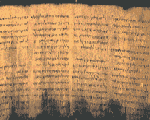




Provisions
The list of controlled items developed by the Zangger Committee is known as the Trigger List because export of those items triggers International Atomic Energy Agency (IAEA) safeguards. The items are controlled under the Zangger Committee's understandings because if they were misused they could contribute to a nuclear explosive program. Examples of these items are plutonium, highly-enriched uranium (HEU), reactors, reprocessing and enrichment plants, and equipment and components for such facilities. The Zangger Committee requirements for exports of Trigger List items are that they 1) not be used for nuclear explosives, 2) be subject to IAEA safeguards in the recipient non-nuclear weapon state, and 3) not be reexported unless they are subject to safeguards in the new recipient state. The Committee meets twice a year in Vienna, Austria. New members are admitted by invitation and must accept the "understandings" of the Committee through a confidential exchange of notes with all existing members.
The Zangger Committee was formed in the early 1970s to establish guidelines for implementing the export control provisions of the Nuclear Nonproliferation Treaty (Article III(2)). According to the Article "Each State Party to the Treaty undertakes not to provide: (a) source or special fissionable material, or (b) equipment or material especially designed or prepared for the processing, use or production of special fissionable material, to any non-nuclear-weapon State for peaceful purposes, unless the source or special fissionable material shall be subject to the safeguards required by this article."Status
Claude Zangger of Switzerland was the Committee's first Chairman and served almost 20 years until his retirement in 1989. The Committee continues to be named after him in honor of his long service.
The Trigger List has been updated substantially since it was first adopted in 1974 to provide greater detail and clarity in all areas of the nuclear fuel-cycle. The fundamental criterion under the NPT remains whether an item is "especially designed or prepared" for nuclear use.Documents
Most of the obligations accepted by Committee members have become a part of the public record through communications to the IAEA Director General and subsequent publication in the Agency's Information Circular (INFCIRC) 209 series.News
Chronological archive of news reports, commentary analysis and other related material.Related Web Sites
